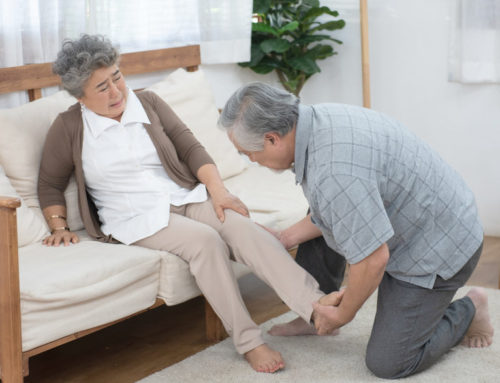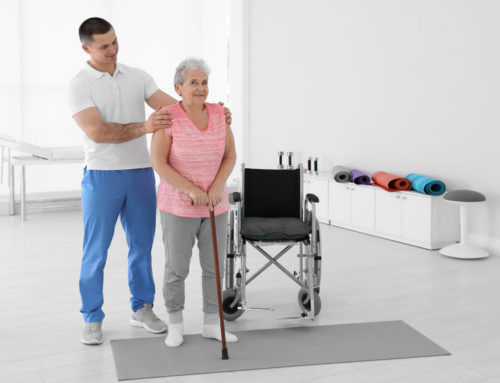Share This Story!
What You Need To Know About Preventing Bone Fractures
As people age, the risk of developing osteoporosis increases. Though osteoporosis can affect people of all races and genders, osteoporosis is most common in older women. Osteoporosis causes bones to become brittle and fragile, leading to fractures. Though osteoporosis can affect a variety of people, there are some medical conditions that increase a person’s chances of developing osteoporosis.
Increased inflammation = increased osteoporosis risk
Like osteoporosis, rheumatoid arthritis is a disease that usually affects older people and more commonly affects women. Rheumatoid arthritis is characterized by swelling and inflammation of the joints, leading to pain and stiffness. Studies have shown that people with rheumatoid arthritis are at a higher risk of developing osteoporosis.
Many common arthritis medications lead to increased bone loss. Additionally, people with arthritis often feel sore, tired, and less motivated to exercise. Low activity increases a person’s chances of developing osteoporosis. People with rheumatoid arthritis need to exercise regularly, both to decrease symptoms of arthritis and decrease chances of developing osteoporosis.
About 15% of people with this disease also have osteoporosis
Research has found that about 15% of people with inflammatory bowel disease (IBD) also have osteoporosis. One reason for this may be that IBD causes chronic inflammation in the body. This chronic inflammation can cause the cells that break down bone to become too active, leading to brittle bones and osteoporosis.
Additionally, people with IBD have more trouble absorbing the vitamins and nutrients essential to bone health, like calcium and vitamin D. People with IBD should work with a healthcare provider to monitor nutrient levels. This will decrease the chances of developing osteoporosis.
When the body attacks itself
Lupus is an autoimmune disease that causes the body to attack itself. People with lupus often have inflamed joints, skin, kidneys, and lungs. About 90% of lupus patients are women, and women are already at a higher risk for osteoporosis.
Additionally, much like in people with rheumatoid arthritis, the chronic inflammation and fatigue of lupus can make people tired and stiff and less likely move enough. People with lupus should focus on exercising regularly and eating a nutritious diet both to reduce lupus symptoms and decrease the risk of osteoporosis. National guidelines also recommend that all women over the age of 65, or women who are younger who have risk factors for osteoporosis, should get a bone density test every 1-2 years.
Are you unable to eat gluten? It could turn into osteoporosis
People with celiac disease are unable to tolerate gluten. If people with celiac disease eat gluten, the immune system attacks the small intestine, which is a key organ in absorbing nutrients. Celiac disease that is left untreated can turn into osteoporosis.
People with celiac disease who consume a lot of calcium can still be deficient in calcium due to poor nutrient absorption. The most important part of managing celiac disease is eating a gluten-free diet. Once a person has developed good eating habits, osteoporosis prevention strategies are similar to those recommended for all people. These strategies include getting enough vitamin D, performing weight-bearing exercise, and avoiding alcohol and tobacco. In people with celiac disease, doctors may recommend taking osteoporosis medication preemptively.
Building better bones
Bones are made up of living tissue that is constantly turning over and creating new tissue. This means that some simple lifestyle changes can build better bones and decrease risk of osteoporosis. Some of the most important preventive measures include exercising regularly, getting adequate calcium intake, and cutting back on alcohol and tobacco use. Eating plenty of protein and vitamin D will also help a person build strong bones for years to come.





